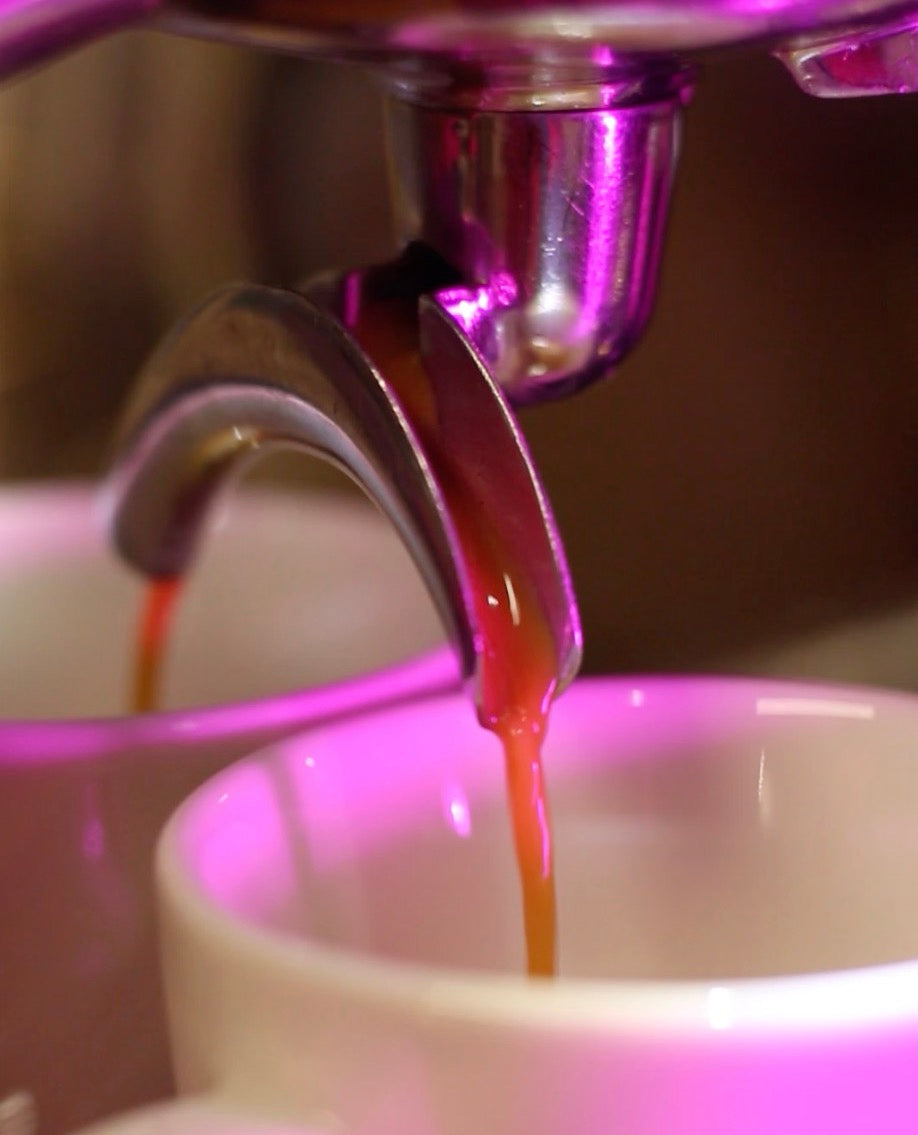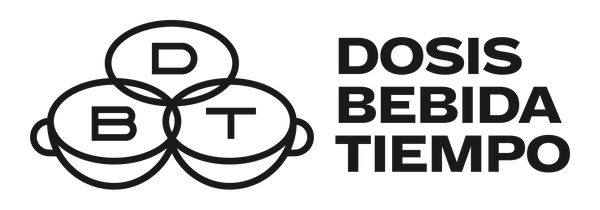Coffee Information
This coffee, produced by Alto Bonito in Tolima, Colombia, was frozen for over a year at around -30°C, awaiting its release. It is a selected batch of Gesha peaberries *, subjected to a washed process with fermentation in an anaerobic environment.
It is a clean, floral, but complex coffee. We decided to wait a long time to launch it, and to show it as a solid point of comparison versus an experiment .
* Peaberry , or caracolillo, is when a coffee cherry has not two, but only one seed inside. It is characterized by a rounder shape and, commonly, a smaller size than normal seeds.
Producer: Alto Bonito .
Country: Colombia.
Region: Tolima.
Altitude: 1750 mts.
Variety: Gesha.
Post-harvest process: Controlled fermentation in an anaerobic environment and washing. Drying on parchment.
Harvest: 2021-2022.

(Photograph obtained from Café Alto Bonito )
Sensory Description
White chocolate, light caramel, tonic water, bergamot, nectarine, licorice, granola, rose water.
Medium-low acidity, sweetness delicate medium and low herbal bitterness.
Light body, silky texture and perfumed finish.
Import
This coffee was purchased from Café Alto Bonito , who produced and imported it to Chile. The final cost per kilo was CLP $22,000. This does not include operating costs, design or packaging —developed in conjunction with Sangre Artificial— .
Roasting
My approach to roasting this coffee changed over time. At first I thought it was a flat, boring, and dull coffee, but luckily I decided to attribute this lack of shine to my lack of experience as a roaster. I decided to store it in a freezer until I felt more capable.
A year later, with a lot more experience, I tried it again. Now that boring coffee tasted like potential to me. I tried very light roasts, and very dark roasts. With very light roasts, there was a lot of potential, but it was very easy to fall into herbal and vegetal notes. With darker roasts, it became too complex, and it was hard to find clear flavors.
Finally, I decided to take this coffee to a much lower temperature than I would normally do, but with a longer roasting time; a sort of slow cooking, which, by continuously slowing down, would allow me to find more precisely the degree of roasting that I prefer.
Toaster: Kaffelogic Nano 7
Load: 90 grams
Initial humidity: 12%, rehydrated to 16%
Total time: 7 minutes, 58 seconds.
DTR: 14.3%
Final Temperature: 213.6 ºC
Accumulated Temperature*: 10.2
Mass loss: 15.4%

*We calculate this value by dividing the area under the roasting curve by the load, ([ºC x min] / grams). We consider this value, in our roaster, to be a reasonable approximation of the development of the coffee, in a broad sense.
Water
All King Solomon coffees are cupped with water that follows the recipe below, which we recommend for the best possible results. If you prefer a simpler option, we recommend using Nomadic Waters , since that is the water we commonly use.
To get to the recipe below you need to first make a couple of mineral concentrates. We used the recipes from Barista Hustle . Our water recipe aims for the highest extraction possible, and a balance between acidity, sweetness and bitterness.
Recipe:
— 185 ppm** of Magnesium Sulfate ( MgSO₄ ); that is, 185 grams of the Hardness concentrate.
— 38 ppm** of Sodium Bicarbonate ( NaHCO₃ ), that is, 38 grams of Buffer concentrate.
— 777 grams of deionized, demineralized or distilled water.
**As an equivalent in CaCO3.
To make things simpler, we will soon be launching our own bottled water, ready to use. Stay tuned!
Preparation
In general, our coffees are designed for high extractions. We recommend fine grinds, higher temperatures, and longer ratios—for filtered, between 1:20 and 1:23; for espresso, between 1:3 and 1:5. In addition, we tend to prefer relatively low concentrations, where we find the greatest clarity in descriptors.
The idea of including recommended recipes is not to prevent you from experimenting with coffee, but to share the recipes with which we have had good results.
Manual percolation coffee makers ( conical or flat bottom, such as V60, Origami, Kalita Wave, Kono, etc.)
Dose: 10 grams.
Water: 150 grams.
Drink: 135-145 grams.
Time : 3 - 4 minutes.
Temperature: Boiling; 97ºC in Santiago.
TDS: 1.2 - 1.3%.
First discharge — saturation or bloom — 30 grams, swirl the coffee maker for 5 seconds making sure all the coffee is wet.
Second pour of 30 grams (60) at 30 seconds. Move the coffee maker gently in circles for 2 seconds.
Third pour of 30 grams (90) when the water level is about to reach the coffee. Move the coffee maker gently in circles for 2 seconds.
Quarter pour of 30 grams (120) When the water level is about to reach the coffee. Move the coffee maker gently in circles for 2 seconds.
Final pour of 30 grams (150) just before the water level reaches the coffee. Move the coffee maker gently in circles for 2 seconds.
It is recommended to reach something close to these parameters with another coffee first. Try to make all pours from the highest possible height that does not break the flow or generate bumps on the surface of the water, in a circular motion over the coffee and maintaining a controlled flow. In addition, it is recommended to keep the water boiling between pours.
Immersion coffee makers (such as AeroPress, French Press, Hario Switch, Clever, etc.)
Dose: 15 grams.
Water: 200 grams.
Drink: 175-185 grams.
Time: 8 - 9 minutes.
Temperature: Boiling; 97ºC in Santiago
TDS: 1.3 - 1.4%
[AeroPress, standard method]
Pour the 200 grams of water over the coffee, trying to pour as quickly and from as high as possible so as not to create any bumps on the surface of the water. Stir carefully, making sure to wet all the coffee evenly.
Insert the plunger without applying pressure to create a vacuum.
At 7 1/2 minutes, with the plunger still inserted, gently move the pot in a circular motion for 5 seconds.
At 8 minutes, begin pressing the plunger very gently for 30 to 60 seconds; press all the way down.
For other immersion coffee makers, use the same proportions and start filtering after 8 minutes. For a French press, leave the filter at the level of the drink's surface, do not press all the way to the bottom and pour gently.
It is recommended to first reach something close to these parameters with another coffee, and use the finest grind with which it is still easy to press the plunger smoothly.
Espresso
Dose: 15 grams.
Water: The water you use in your espresso machine, or the recipe indicated, if you have a machine that allows it easily.
Drink: 40-45 grams.
Time: 15-20 seconds.
Pressure from pump: 6 bar
Temperature: 95-96ºC
TDS: 7 - 8%
It is recommended to reach something close to these parameters beforehand with another coffee. Let the drink cool a little before tasting. For something like a allongé , use the same parameters, but aim for a 75-90 gram drink in about 30-40 seconds. For something like a sprover , aim for 195-205 grams in about 40-60 seconds.
Zero Bypass Coffee Makers (Tricolate and Next Level Brewer)
Dose: 10 grams.
Water: 190 grams, recipe included.
Drink: 170 - 180 grams.
Time: 4-5 minutes.
Temperature: Boiling; 97ºC in Santiago
TDS: 1.3 - 1.5%
[Tricolate]
First pour —saturation or bloom— of 30 grams, move the coffee maker for 10 seconds ensuring that all the coffee is wet or stir carefully with WDT tool.
Second pour of 80 grams (110) at 30 seconds. Move the coffee maker gently in circles for 3 seconds.
Third pour of 80 grams (190) when the water level from the first pour is ~1 cm from the coffee. Move the coffee maker gently in circles for 3 seconds.
For the Next Level LVL-10, use 30 grams of coffee to 580 grams of water, using a slightly coarser grind. For other zero-bypass coffee makers, maintain the proportions but use the dosage recommended by the manufacturer. It is recommended to first get close to these parameters with another coffee. Also, it is recommended to keep the water boiling between pours.
Music
All of our coffees also come with a Spotify playlist, featuring songs we like to listen to while brewing and drinking. Generally, the songs we include in each playlist relate to some sensory aspect of coffee; but explaining exactly how they relate goes beyond words.
Listen to Gesha PB Alto Bonito on Spotify.


